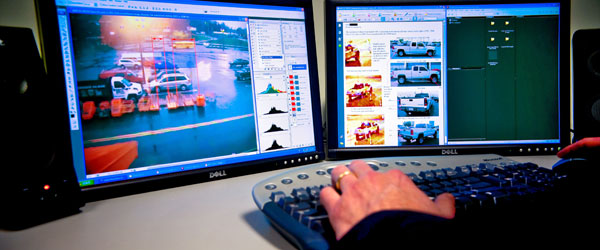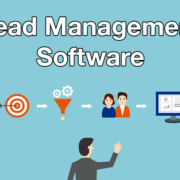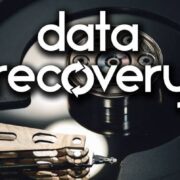In the realm of private investigation, the advent of advanced video tools has revolutionized the way investigators gather and analyze evidence. This transformation is crucial in a world where digital footprints often provide the most compelling evidence. The evolution from traditional surveillance methods to sophisticated digital tools has significantly enhanced the accuracy and efficiency of private investigations.
The Role of Video Tools in Private Investigation
Historical Perspective
Historically, private investigators relied on direct observation and rudimentary recording devices. The introduction of video cameras marked a significant leap, allowing PIs to capture real-time events discreetly. Over the decades, technological advancements have further refined these tools, making them indispensable in modern investigations.
Modern Advancements
Today, private investigators utilize an array of advanced video tools that offer high-resolution footage, night vision capabilities, and remote access. These innovations have expanded the scope of surveillance, enabling investigators to monitor subjects over extended periods without detection.
Types of Video Tools
Private Investigator Video Tools include surveillance cameras, body-worn cameras, drones, hidden cameras, and dash cameras. Each of these tools serves a specific purpose, catering to various aspects of surveillance and evidence collection.
Types of Advanced Video Tools Used by Private Investigators
Surveillance Cameras
Surveillance cameras are a staple in private investigation, providing continuous monitoring capabilities. These cameras are often strategically placed to capture critical areas and are equipped with features like motion detection and remote access.
Body-Worn Cameras
Body-worn cameras have gained popularity due to their portability and ability to capture interactions in real-time. These cameras are typically used during field operations, offering a first-person perspective of events as they unfold.
Drones
Drones offer unparalleled flexibility in surveillance, allowing investigators to monitor large areas from the sky. Equipped with high-resolution cameras and long battery life, drones are ideal for tracking movements and gathering aerial footage.
Hidden Cameras
Hidden cameras are essential for covert surveillance. Disguised as everyday objects, these cameras can be placed in various locations to capture discreet footage without alerting the subject.
Dash Cameras
Dash cameras are commonly used in vehicular surveillance. These cameras record continuously while the vehicle is in motion, providing critical evidence in cases involving transportation or travel.
Digital Evidence Analysis
Definition and Significance
Digital evidence analysis involves examining and interpreting data from digital sources, including video footage. This analysis is crucial for verifying the authenticity of evidence, identifying anomalies, and establishing timelines.
Methods and Tools
Private investigators use specialized software to analyze digital evidence. Tools such as video enhancement software, frame-by-frame analysis tools, and metadata extraction programs are commonly employed to scrutinize video footage meticulously.
Types of Digital Evidence
Digital evidence encompasses various forms, including video recordings, audio files, digital photographs, and metadata. Each type provides unique insights and can be used collectively to build a comprehensive case.
Video Evidence Collection Techniques
Legal Considerations
Collecting video evidence involves adhering to legal guidelines to ensure its admissibility in court. Private investigators must obtain proper authorization and comply with privacy laws to avoid legal complications.
Ethical Guidelines
Ethical considerations are paramount in private investigation. Investigators must balance their pursuit of evidence with respect for individual privacy, ensuring that their methods do not infringe on civil liberties.
Best Practices
Effective video evidence collection requires meticulous planning and execution. Best practices include using high-quality equipment, maintaining a clear chain of custody, and documenting all steps taken during the investigation.
Analyzing Video Evidence
Software Used
A variety of software tools are available for analyzing video evidence. These include video editing software, forensic analysis tools, and specialized programs for enhancing video quality and extracting metadata.
Techniques for Enhancing Video Quality
Enhancing video quality is often necessary to clarify details and improve the visibility of critical elements. Techniques include adjusting brightness and contrast, stabilizing shaky footage, and using noise reduction filters.
Frame-by-Frame Analysis
Frame-by-frame analysis allows investigators to scrutinize each moment of the video in detail. This technique is crucial for identifying subtle actions, verifying timestamps, and cross-referencing other pieces of evidence.
Challenges in Video Evidence Analysis
Technical Challenges
Technical challenges include dealing with low-quality footage, ensuring the integrity of digital files, and overcoming issues related to video compression and format compatibility.
Legal Challenges
Legal challenges involve ensuring that video evidence is collected, stored, and presented in compliance with legal standards. This includes addressing concerns about privacy, consent, and the chain of custody.
Ethical Challenges
Ethical challenges revolve around balancing the need for surveillance with respect for individual rights. Investigators must navigate ethical dilemmas related to privacy and the potential misuse of video evidence.
Case Studies
Successful Use of Video Tools
Numerous cases highlight the successful use of video tools in private investigation. These cases demonstrate how advanced video technology can uncover critical evidence, solve complex cases, and bring justice to light.
Real-Life Examples of Solved Cases
Real-life examples include cases of infidelity, fraud, missing persons, and corporate espionage. These examples illustrate the diverse applications of video tools and their impact on various types of investigations.
Lessons Learned
Lessons learned from these cases emphasize the importance of using the right tools, adhering to legal and ethical standards, and continually updating skills and knowledge to keep pace with technological advancements.
Benefits of Advanced Video Tools in Private Investigation
Increased Accuracy
Advanced video tools provide high-resolution footage, allowing investigators to capture clear and detailed evidence. This accuracy is crucial for verifying facts and establishing reliable timelines.
Enhanced Reliability
The reliability of video evidence is unmatched, as it provides a visual and often time-stamped record of events. This reliability is essential for building strong cases and presenting compelling evidence in court.
Improved Efficiency
Modern video tools streamline the investigative process, allowing private investigators to gather and analyze evidence more efficiently. This efficiency translates into faster case resolutions and more effective use of resources.
Future Trends in Video Tools for Private Investigators
Emerging Technologies
Emerging technologies, such as artificial intelligence (AI) and machine learning, are set to revolutionize video analysis. These technologies can automate tasks, identify patterns, and provide deeper insights into video evidence.
Potential Future Advancements
Future advancements may include enhanced drone capabilities, improved video quality, and more sophisticated analysis tools. These developments will further expand the capabilities of private investigators.
Predictions for the Industry
The future of private investigation will likely see increased reliance on digital tools, greater integration of AI, and continued advancements in video technology. These trends will enhance the effectiveness and efficiency of investigations.
FAQs about Private Investigators and Video Tools
Common Questions and Answers
- What types of video tools do private investigators use? Private investigators use surveillance cameras, body-worn cameras, drones, hidden cameras, and dash cameras.
- How do private investigators analyze video evidence? They use specialized software for video enhancement, frame-by-frame analysis, and metadata extraction.
- What legal considerations are involved in video surveillance? Legal considerations include obtaining proper authorization, complying with privacy laws, and maintaining a clear chain of custody.
Clarifying Misconceptions
- Is video evidence always admissible in court? Video evidence is admissible if collected legally and ethically, following proper procedures to ensure its integrity.
- Do private investigators need a license to use video tools? Yes, private investigators typically need a license and must adhere to legal and ethical standards when using video tools.
Conclusion
The integration of advanced video tools and digital evidence analysis has transformed the field of private investigation. These technologies provide unparalleled accuracy, reliability, and efficiency, enabling private investigators to solve complex cases and uncover hidden truths. As technology continues to evolve, the capabilities of private investigators will only expand, offering new opportunities to enhance their work and deliver justice.










Comments